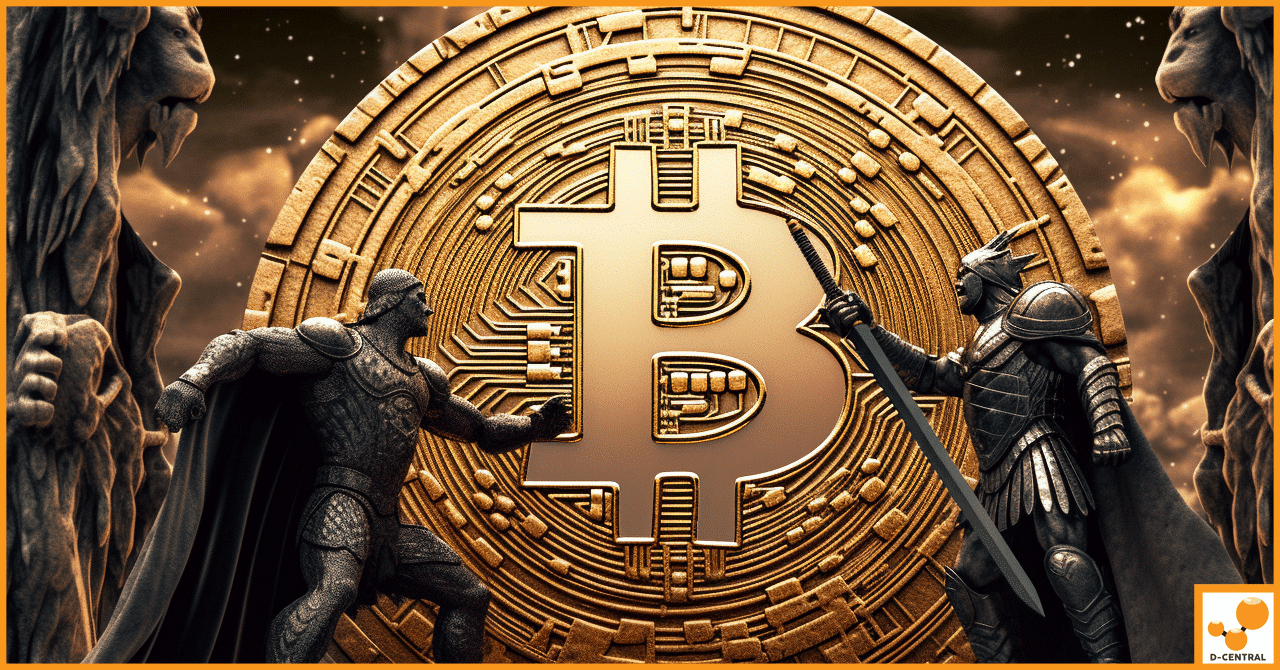
The Importance of Effective ASIC Miner Maintenance Planning
In the rapidly evolving world of cryptocurrency mining, Application-Specific Integrated Circuit (ASIC) miners have emerged as the linchpins of efficiency
4479 Desserte Nord Autoroute 440, Laval, QC H7P 6E2

In a galaxy far, far away, the struggle for control is a central theme that resonates with audiences across generations. But this battle is not confined to the fictional universe of Star Wars; it mirrors a real-world struggle that is unfolding in our financial systems. The rise of centralized control mechanisms, both in the Galactic Empire and in modern economies, has sparked a debate about the very essence of freedom, privacy, and decentralization. These themes, though seemingly distant in a sci-fi context, find a startling parallel in today’s world, where the control of money and information is a battleground that shapes our society.
In the Star Wars universe, the Imperial chain codes serve as a symbol of the Empire’s tightening grip on the galaxy’s citizens. These digital identification systems, containing biometric and personal data, are used to track and control individuals, limiting their freedom and autonomy. Similarly, in the real world, Central Bank Digital Currencies (CBDCs) are emerging as a new form of money that could be used by governments to monitor and regulate financial activities. While CBDCs promise efficiency and innovation, they also raise concerns about privacy and individual rights, echoing the dystopian control seen in the Star Wars saga.
This article will explore the intriguing parallels between the fictional Imperial chain codes and real-world CBDCs, delving into their implications for individual freedom, privacy, and the broader struggle against centralized control. By examining these tools of control through the lens of both the Star Wars universe and modern financial systems, we will uncover the underlying philosophical questions that challenge our understanding of autonomy and resistance.
Chain codes in the Star Wars universe are a complex system of digital identification, implemented by the Galactic Empire to exert control over its citizens. These codes serve as a means to track, identify, and regulate individuals across the galaxy. Introduced as part of the Empire’s consolidation of power, chain codes symbolize the loss of personal freedom and the rise of a surveillance state. They were implemented to ensure compliance with Imperial laws, restrict unauthorized travel, and suppress any form of rebellion.
A chain code is a unique identifier containing various pieces of biometric and personal data. It includes information such as species, age, physical characteristics, and even medical history. The code is encrypted and stored in a centralized Imperial database, accessible only to authorized personnel. It is required for activities like travel, employment, and access to certain services, making it an essential part of daily life in the Empire. The use of chain codes extends to ships and droids, further tightening the Empire’s grip on all aspects of life in the galaxy.
The implementation of chain codes has profound implications for individual rights and privacy. By centralizing personal information and linking it to everyday activities, the Empire has created a system that can monitor and control the movements and actions of its citizens. This level of surveillance not only restricts personal freedom but also creates a climate of fear and compliance. Individuals are stripped of their anonymity, and any deviation from Imperial regulations can be quickly detected and punished. The chain codes thus become a tool of oppression, stifling dissent and reinforcing the Empire’s authoritarian rule.
Central Bank Digital Currencies (CBDCs) are a digital form of fiat money issued and regulated by a country’s central bank. Unlike cryptocurrencies like Bitcoin, which operate on decentralized networks, CBDCs are centralized and backed by the government. The consideration of CBDCs has gained momentum in recent years as central banks explore ways to modernize financial systems, enhance payment efficiency, and respond to the growing popularity of digital currencies. The purpose of CBDCs is to provide a secure, digital alternative to physical cash, potentially allowing for greater control over monetary policy and financial stability.
Benefits:
Drawbacks:
The introduction of CBDCs raises significant concerns about individual privacy and freedom. Unlike cash transactions, which can be conducted anonymously, CBDCs would likely be traceable, allowing governments to monitor financial activities closely. This level of surveillance could lead to a loss of financial privacy, as every transaction could be recorded and analyzed. Furthermore, the centralized nature of CBDCs means that control over personal financial data would reside with the government or central bank, potentially exposing individuals to data breaches or misuse of information. The potential for state control and surveillance through CBDCs echoes the dystopian control seen in the Star Wars universe with Imperial chain codes, raising critical questions about the balance between innovation, efficiency, and the preservation of individual rights and freedoms.
Bitcoin, the world’s first decentralized cryptocurrency, stands as a stark contrast to Central Bank Digital Currencies (CBDCs). Created by the pseudonymous Satoshi Nakamoto, Bitcoin operates on a decentralized network, free from government control or central authority. Unlike CBDCs, which are digital representations of fiat currency, Bitcoin is a peer-to-peer digital asset with a fixed supply, governed by cryptographic principles. Its decentralized nature ensures that no single entity can control or manipulate the currency, making it a symbol of financial autonomy and freedom.
The core philosophy of Bitcoin revolves around decentralization and individual empowerment. By utilizing blockchain technology, Bitcoin enables users to transact directly with one another without the need for intermediaries like banks or governments. This peer-to-peer system promotes financial inclusion, privacy, and autonomy, allowing individuals to control their own funds and make decisions without external interference. In a world where centralized entities like the Galactic Empire or central banks wield significant power, Bitcoin represents a beacon of hope, offering a path to financial self-sovereignty.
Bitcoin’s decentralized architecture poses a direct challenge to traditional financial systems and centralized control mechanisms like CBDCs. By providing an alternative to government-issued currencies, Bitcoin disrupts the conventional banking model, reducing reliance on central authorities. Its transparent and immutable ledger ensures accountability and trust, qualities often lacking in centralized systems. Moreover, Bitcoin’s global accessibility and censorship resistance make it a powerful tool for resisting oppressive regimes and promoting financial freedom. Just as the Rebellion in Star Wars fought against the Imperial control, Bitcoin symbolizes a peaceful protest against the current monetary regime, illuminating a path towards a more equitable and decentralized financial future.
The striking parallels between Imperial chain codes in the Star Wars universe and Central Bank Digital Currencies (CBDCs) in the real world offer a profound insight into the nature of control and surveillance. Both systems serve as tools for tracking and regulating individuals, albeit in different contexts.
The comparison between these two mechanisms highlights the delicate balance between innovation, efficiency, and the potential erosion of privacy and individual freedoms.
The themes of resistance and rebellion resonate strongly in both the Star Wars narrative and the crypto movement.
These parallel themes underscore the timeless struggle for individual rights, autonomy, and the fight against oppressive systems.
The ongoing debate between centralized and decentralized systems of control is at the heart of the comparison between chain codes and CBDCs.
The exploration of these contrasting systems sparks a critical conversation about the future of finance, governance, and the values that guide our society.
This exploration into the parallels between Imperial chain codes, Central Bank Digital Currencies (CBDCs), and Bitcoin has revealed a complex interplay between control, freedom, and innovation. By drawing connections between the fictional world of Star Wars and the real-world dynamics of modern finance, we’ve uncovered profound insights into the nature of centralized power and the potential for decentralized alternatives.
The future of decentralized systems like Bitcoin is filled with promise and challenges. As we navigate the evolving landscape of finance and technology, the lessons from Star Wars serve as both a cautionary tale and an inspiration. The struggle for freedom, autonomy, and ethical stewardship is a timeless endeavor, and the path forward requires wisdom, balance, and vigilance.
At D-Central Technologies, we are committed to empowering individuals and fostering a decentralized future. We invite you to join us in this exciting journey, whether you’re a seasoned crypto enthusiast or just beginning your adventure. Explore our comprehensive mining support, consultation, and outsourcing solutions, and become part of the rebellion against the fiat empire.
As we conclude this exploration, we look forward to delving deeper into the parallels between the world of Bitcoin and the Star Wars universe. Stay tuned for “Star Wars, A Bitcoin Story – Episode IV: From Satoshi’s White Paper to the Jedi Code.” Together, we’ll unravel the connections between Satoshi Nakamoto’s revolutionary vision and the timeless wisdom of the Jedi, continuing our quest to understand the transformative potential of decentralization.
DISCLAIMER: D-Central Technologies and its associated content, including this blog, do not serve as financial advisors or official investment advisors. The insights and opinions shared here or by any guests featured in our content are provided purely for informational and educational purposes. Such communications should not be interpreted as financial, investment, legal, tax, or any form of specific advice. We are committed to advancing the knowledge and understanding of Bitcoin and its potential impact on society. However, we urge our community to proceed with caution and informed judgment in all related endeavors.
Related Posts

In the rapidly evolving world of cryptocurrency mining, Application-Specific Integrated Circuit (ASIC) miners have emerged as the linchpins of efficiency

The landscape of Bitcoin mining has undergone a remarkable transformation since the inception of this groundbreaking digital currency in 2009.

In the world of digital currencies, Bitcoin has always stood out as the pioneer of decentralization. Since its inception in